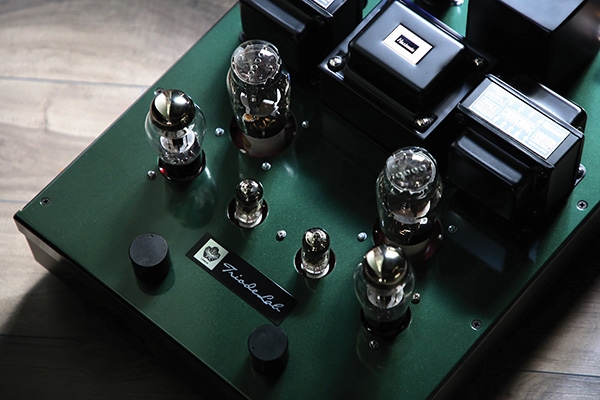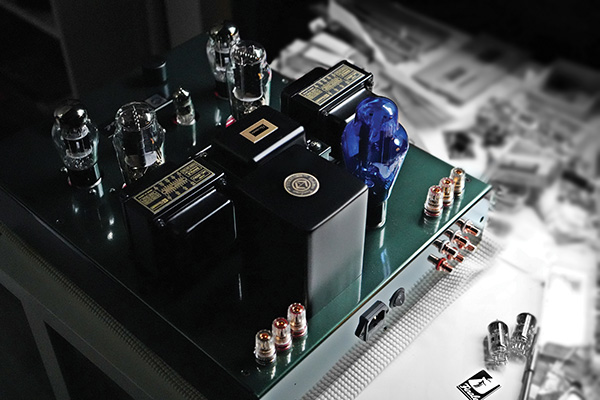| Columns Retired Columns & Blogs |
Wow, Ken, just gorgeous writing in this one. Kudos.

The years melted away—George Lawrence Stone's sticking variations, Benjamin Podemski's concert drum solos, dog-eared "Real Book" charts, college big band concerts, smoky jam sessions, a basement practice routine that nearly deafened Mom. Once I was in NYC, there were classes at Drummer's Collective.
With intense application, playing became rote. But in rare moments of surrender, it wasn't me playing the music anymore. The music played me—ideas transmitted effortlessly, without thought, guided by some unseen force: maybe the woman in the third row, maybe the ghost of Tony Williams. In such moments, when fatigue stilled the mind, instrument and music intertwined, a single entity responding not to conscious thought but to some unknown, unknowable force. What ensued was beyond my mental reach.
In the 1980s, my musician crew and I stumbled upon this "flow" state, which we coined as part of our musicians' parlance. Or so we thought.
Turns out that Hungarian-American psychologist Mihály Csíkszentmihályi was already onto it. "Flow in positive psychology, also known colloquially as being 'in the zone,'" states Wikipedia, is "the mental state in which a person performing some activity is fully immersed in a feeling of energized focus, full involvement, and enjoyment in the process of the activity."
Flow, or something like it, happens for listeners, too. I've experienced it often in the audience at jazz performances. As a Stereophile reviewer, I've chased that elusive feeling. Occasionally, a new piece of equipment—single-ended triode (SET) integrated amplifiers by Audio Note (UK) and Italy's Mastersound; push-pull stereo tube amps from E.A.T. and Shindo; solid state amps from Ayre and Luxman; a digital amp from Technics—have unlocked a similar sonic transcendence. I've heard the flow state from inexpensive gear and from ultra-expensive gear. It's a bit of a phantom, but when it's there, it's undeniable. The flow state can be physical and cerebral: felt, heard, and conceptualized.
Some believe that SETs are especially adept at achieving the flow state, thanks to their rare ability to reproduce music in its most emotionally engaging form, to produce a harmonic aura, an immersive bloom, a rich physical presence that fills the room. Paired with the right high-sensitivity speakers, well-designed SET amps can even deliver solid, tuneful bass.
SET amplifiers, which operate in class-A, typically produce watts in single digits, powering speakers with a single, low-power output device. Push-pull amps, which run in either class-A or class-AB, split the incoming AC signal into halves then reassemble the signal at the output. Push-pull tube amps can sound wonderful (as my Shindo Haut-Brion does), be more affordable, and offer more power, but they're not SETs.

The 2A3 EVO
Hailing from Triode Lab's Canadian factory, the SET 2A3 EVO integrated amplifier ($8999) is built from such high-quality components as Mundorf silver oil film coupling capacitors, Japanese QQQ tube sockets, and Hashimoto Electric output transformers (originally found in the coveted '60s-era Sansui AU-111 integrated). The 2A3 EVO is an autobias design employing one pair each of 12AX7 and 6SN7 tubes in the preamp stage, a 274B rectifier tube, and two direct-heated 2A3 tubes for power. It outputs 3.5Wpc into 8 ohms. It stands 13½" wide × 17½" deep × 10" high including tubes and weighs 30lb.
Triode Lab was founded in 2004. Personnel include Founder and Designer Frank Ng, Marketing and Retail Partner Peter Wolter, Product Specialist Noam Bronstein, and Speaker Designer Robert Gaboury, who designed the Heretic AD614 loudspeakers that Herb Reichert so loved.
"We are fortunate that at Triode Lab and Finale Audio"—Finale is a joint venture with Triode Lab that manufactures less esoteric designs—"it's a team effort with some highly talented engineers and technicians from different fields of expertise in the electronics industry," wrote Frank Ng in an email.
Triode Lab's SET EVO line boasts four integrated amplifiers built around 45 or 2A3 tubes, alongside three preamps and a battalion of eight power amps.
"Each transformer, each part, each bit, is well thought out and considered," notes the Triode Lab website. "For example, the power transformer is right behind the 2A3s for a reason: It provides the shortest voltage supply path to the 2A3s. If it is longer, the weak 2.5V that feeds them might drop even lower, resulting in lowered output power. Look at the output transformers: The binding posts are put right behind them, again aiming for the shortest path for superior bass response. Every inch under the chassis [is] well used. They all have a reason to be there."
"All of us spend a great amount of time listening, voicing and tuning each of our designs; it's not just lab work," Ng added. "Our motto is, 'the measurements have to be good; the sound, too, is equally important.' Even the rubber footers help us voice the sound we have in mind."
Constructed from Canadian aluminum, the 2A3 EVO amplifier is assembled in a two-part enclosure of 0.080"-thick top and bottom plates. My review sample was finished in handsome British Racing Green Metallic, one of 10 available paint options.
Unlike most amplifiers, the 2A3 MK2 is ordered without tubes. This allows customers to "tube roll"—to experiment with different tubes to subtly alter the sound. Fear not, Triode Lab will supply tubes, at market price, upon request. Options include Canadian, Chinese, and Russian manufacturers and more exotic brands, letting you tailor the sonic signature to your desires. My review sample came with a pair each of Sophia Electric 12AX7s, Northern Electric 6SN7s, Electro-Harmonix 2A3 EHs, KR Audio 2A3s (for comparison), and a single Sophia Electric Aqua 274B rectifier tube. Herb Reichert lent me a pair of NOS RCA 2A3s.
The 2A3 EVO's layout is clean. On top, you'll find the tubes, a black-anodized Swiss-made Elma aluminum input selector, the knob for an ALPS Blue volume control, and a pair of CMC gold-plated binding posts for 4- and 8-ohm taps. Housed in satin black cases are the transformers—two Hashimoto HC-203U output transformers and a Hashimoto 45/2A3 power transformer—and a large choke. The rear panel is home to three pairs of CMC gold-plated RCA inputs, a gold-plated Furutech IEC power receptacle, and the power button.

Triode Lab offers a unique way to personalize output transformers. When ordering through a dealer, the customer can choose between three Hashimoto output transformers—7W Standard, 20W Classic, or 20W Potted Combo—each offering a distinct sonic signature.
"The 20W Classic version comes standard with both the 2A3 EVO and 45 EVO amps," Ng explained. "This transformer is an excellent compromise, as it can drive most speakers very well and has a more reasonable cost. This is in your review sample."
"The 7W is a potted design," Ng continued. "These have superior highs and clarity, speed and sharpness, but are more limited with bass. These make a good match for minimonitors, higher efficiency two-ways, and fast/smaller-sized single drivers."
"The 20W Potted are the ultimate transformers," Ng concluded. "They drive everything well, including bigger horn speakers and hybrids like Tannoy, JBL, Altec, Klipsch, etc., designs. The speakers (and ancillary gear, including tubes and cables) need to be good enough for the 20W Potted, to be able to demonstrate its ability and justify its significant cost."
My review sample included the upgraded choke option ($250). "The upgrade to the large Hashimoto choke transformer results in lower DC resistance, better magnetic flux saturation, and in turn, lower signal loss in the power supply circuit," Bronstein wrote. "The result is a slightly cleaner and more musical audio signal." An upgrade to "R" status, which includes the 20W Potted transformer, the upgraded choke, and better hardware and capacitors, adds $1500 to the price.
Triode Lab eschews traditional point-to-point wiring in favor of circuit boards, known for their improved consistency, efficiency, and sometimes lower noise, though the sonic impact of that might be subtle to the untrained ear. "We use high-grade circuit boards to guarantee short, balanced, uninterrupted signal paths and for ease of QC, safer shipping, and efficiency of servicing," Ng stated. "We design and draw the circuit boards ourselves, in house, for perfection and durability, which is crucial for achieving the best sound." They use their own solid-core, copper wire with PVC insulation and Teflon-coated silver-plated wire from Belden.
Triode Lab amplifiers employ negative feedback to reduce distortion, stabilize gain, extend frequency response, and perhaps also to lower output impedance—but not a lot. "All our amps have a minimal amount of negative feedback, which is needed for good sound quality, stable performance, refinement, noise control, etc.," wrote Noam Bronstein. "It also increases reliability and the ability to drive more types of speakers."
To better understand a designer's sonic vision, I always ask about their reference systems. Frank Ng's Triode Lab system is a study in contrasts: Esoteric SACD player/DAC and an Accuphase tuner serve up music on the digital side. A Linn LP12 turntable with a Nagaoka MP300 cartridge spins vinyl. Ng employs a variety of speakers, ranging from single-driver designs to two-way and three-way configurations, with a focus on high-sensitivity speakers including horns. Furutech, Cardas, and Finale cables complete the chain.

Wow, Ken, just gorgeous writing in this one. Kudos.

(who's also named Alex) said the same thing:
really fine piece of work Ken
hr

That really should be a band or album name! lol.
Great comparison with the PrimaLuna. Comparisons are important and really need to be done more often. I wouldn't mind if model names were removed to protect the innocent (as some will be painted as 'guilty' after said comparisons).

I call "lizard brain mode." When all the higher order thinking stops and the music just happens. Happens with athletic related stuff for me too. Just do it is a thing, I've even watched myself where my higher order thinking turns on but is disconnected from the "lizard brain" and my hands are just doing stuff (like fencing) while I watch... and then it all comes crashing down lol because I lost the mental state and thought about it. I think it's also part of why I have unusually fast reflexes - fast enough for people to comment on thier speed. I may also be in a high percentile for nerve thickness (thickness equates to the speed of an action potential moving down the nerve - thanks vertibrate physiology!).
Brains are weird and wonderful.
I also play drums (and a little guitar); and in the past cello because my mom said, "hell no!" to me playing drums.

that make me want to get an SET amp like this, a turntable dedicated to mono playback, mono phono preamp and some tiny ultra efficient mini-monitors (maybe those baby Devores...?) Actually - note to JA - I know the magazine is STEREOphile but would love to read a review of a pure mono system - one speaker, one mono block etc.